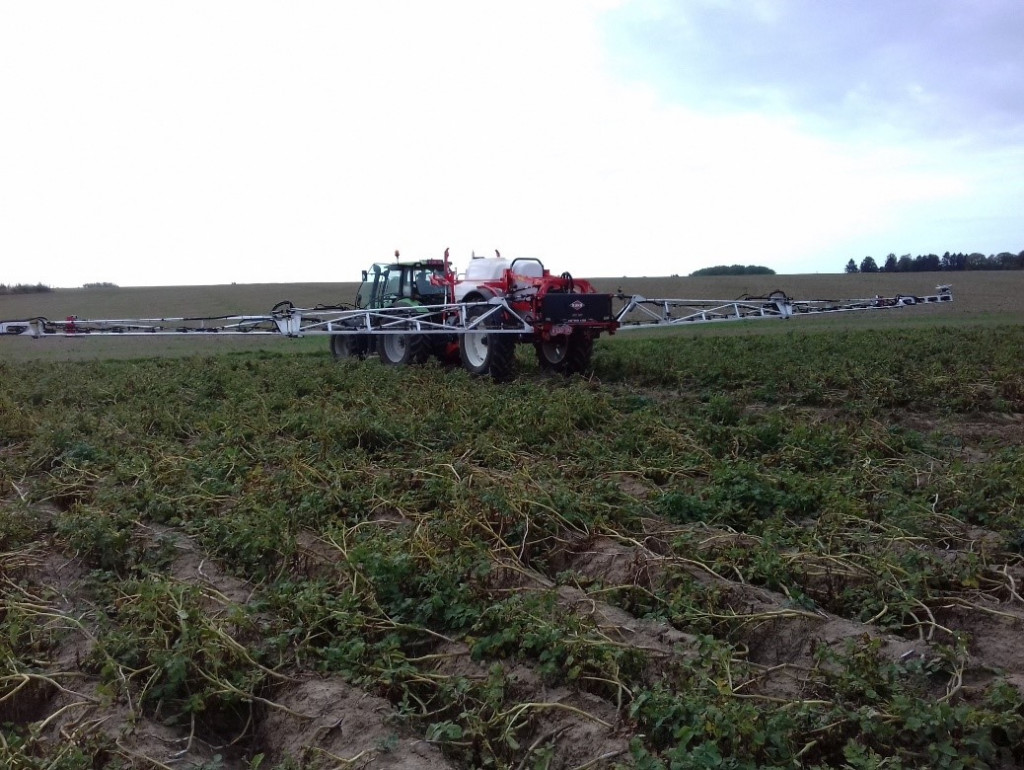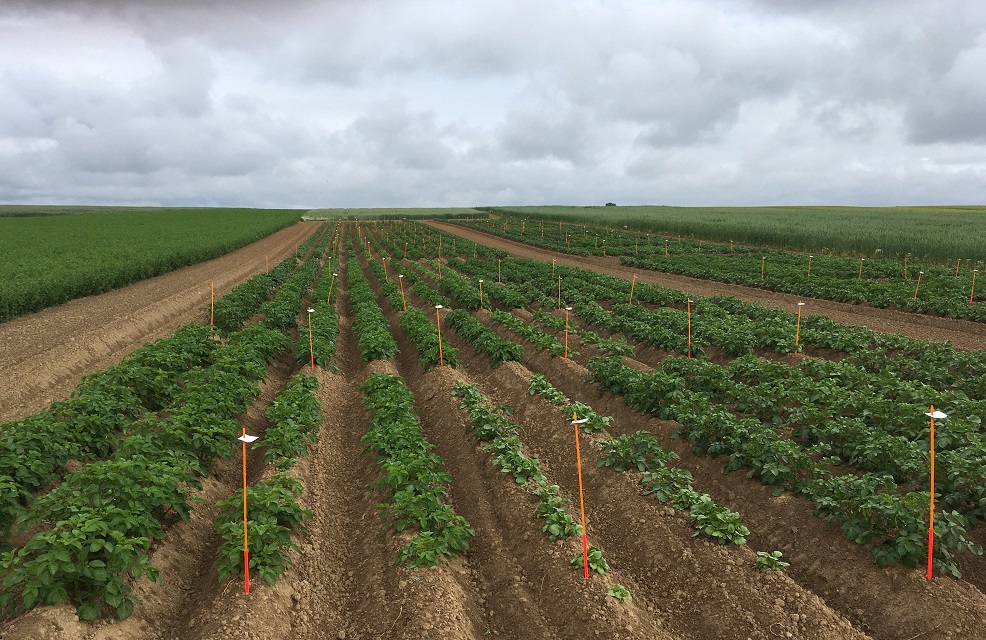Images provided by sensors make it possible to limit the use of herbicides for this operation by adjusting the supply of products according to the vegetation.
The DEFAPOT project, conducted in partnership with the Walloon potato industry, consists of studying the possibility of supplying an appropriate dose of desiccant at each point of the potato field, depending on the remaining vegetation to be destroyed. It is hoped that by restricting the doses of desiccant used, the environmental impact of the crop will be reduced, along with the cost of crop inputs for the farmer.
The amount of biomass remaining is assessed by means of multispectral cameras. The images are transformed into a vegetation index, making it possible to quantify the remaining vegetation and generate a biomass map that represents the heterogeneity of the field. The project has enabled us to compare several means of transport for these cameras (drone, satellite, on board a tractor or sprayer). A comparison of the various data obtained highlighted that there was no preferred vehicle, but each had its advantages and disadvantages depending on the location of the plots, the weather, the cost, the time required for implementation and the desired precision.
The required dose of desiccant could be predicted on the basis of vegetation indices according to algorithms developed by the University of Wageningen. This makes it possible, on the one hand, to objectify the actual dose of desiccant required according to the vegetation index and, on the other hand, to produce a recommendation chart based on the heterogeneity of the plots.
As part of the project, several trials were carried out on farmland in 2018 and 2019, using a CRA-W sprayer fitted with dose-adjustment technology along its entire width. Tracing equipment was developed and installed on the sprayer. This provided a means of recovering and geolocating all spraying parameters (spraying instruction, actual dose applied, pressure, speed, etc.).
The results have demonstrated the benefits of these new technologies, with observed reductions ranging from 8% to 61%, depending on the trials. There was no impact on the yields, quality or ease of uprooting. However, in spite of a sometimes significant decrease, the cost of these technologies is not compensated by a reduction in the cost of the crop inputs. It is therefore difficult for farmers to adopt this kind of technology at this time, Meanwhile the CRA-W is now monitoring one farmer per year in this step. In 2020, no fewer than 60 hectares were adjusted using this process.
The DEFAPOT project is funded by the CRA-W and the SPW-DGO3.





